This list includes some common and less commonly found invasive species in Central Texas, but not everything.
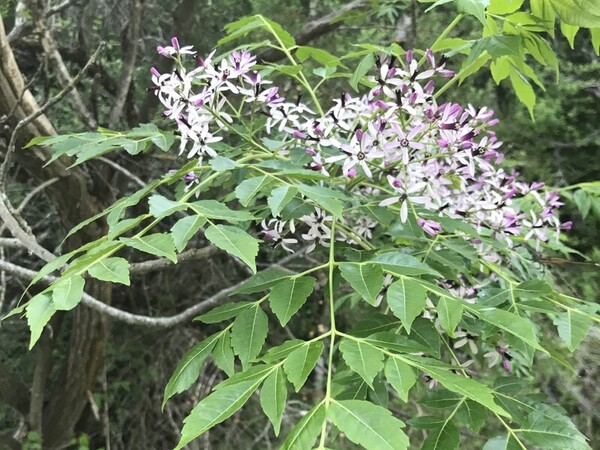
Chinaberry (Melia azedarach): Introduced from Asia in the mid-1800s as an ornamental tree. Dark green leaves are doubly compound, alternate, deciduous, and display bright yellow fall colors. Clusters of lavender flowers form spherical, yellow fruit about ½ inch in diameter that persists on the tree in winter. The bark, leaves, and fruit are poisonous to humans, some livestock and mammals, including cats and dogs.
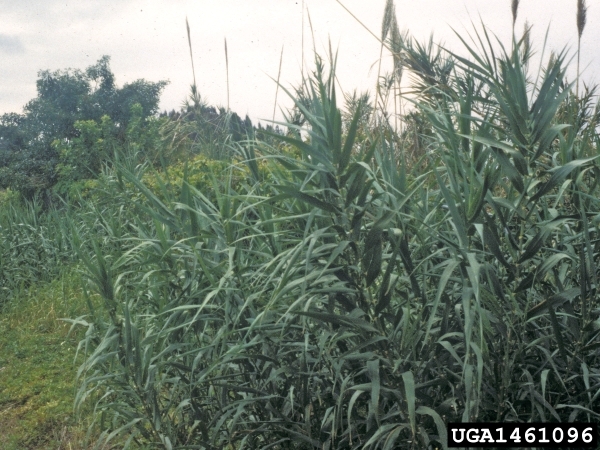
Giant Reed (Arundo donax): Introduced from Asia and Europe in the 1800s. Bamboo-like stems growing in thickets up to 20 feet tall. Alternate, corn-like, lanceolate leaves. Feathery flower clusters form dense plumes on the ends of stalks. It spreads aggressively in wetland and riparian areas. Rapid growth and extensive root system make it difficult to control and manage.
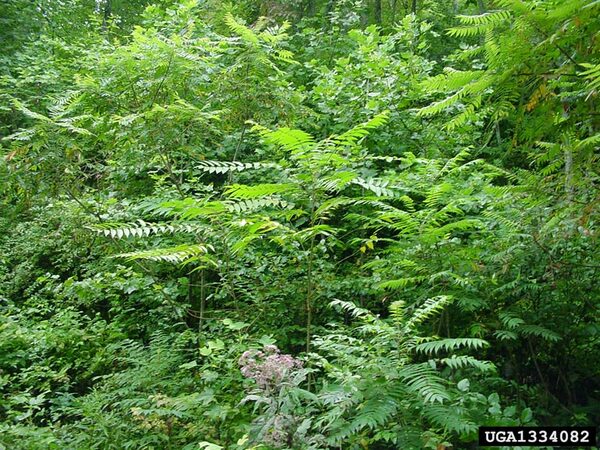
Tree-of-Heaven (Ailanthus altissima): Also known as ailanthus, Chinese sumac, and stinking sumac. Is originally from China. Rapid growing tree to 80 feet tall with alternate, compound leaves, 10 to 40 leaflets with smooth margins on one- to four-foot stalks. Large terminal clusters of small yellowish-green flowers yield wing-shaped fruit on female trees. Can quickly take over a site by forming thickets and dense stands. These trees produce toxins that prevent other trees from growing.
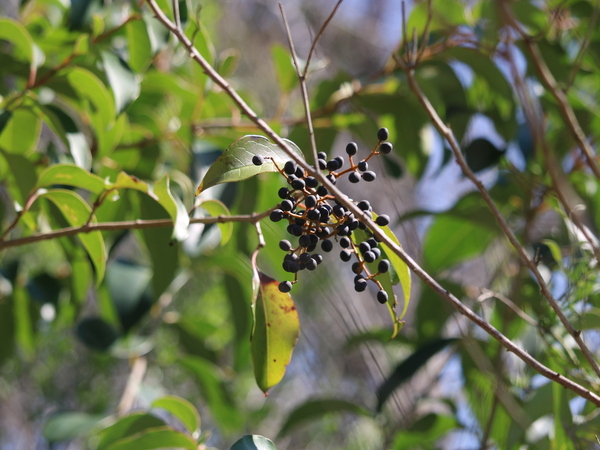
Chinese, Glossy, and Japanese Privets (Ligustrum spp.): Native to China and Europe and brought to the U.S. by the mid-1800s as ornamentals. Ligustrum can outcompete native vegetation and when not controlled can take over all the other plants, becoming the only one and changing the understory of a forest. Mostly evergreen, thicket-forming shrubs having opposite, elliptical leaves with smooth edges. Fragrant, white flowers form in spring and produce clusters of dark purple berries.

Chinese Tallow (Triadica sebifera): Also known as popcorn tree. Introduced from China around the 1700s as an ornamental and then in the 1900s the U.S. Department of Agriculture distributed it along the Gulf Coast to try to start a soap making industry. Deciduous tree reaching 60 feet in height. Readily invades open land and has oval shaped leaves that are alternate. During the fall the leaves display bright red coloring. Attractive white berries, also called popcorn berries, persist on the tree in the fall and winter.
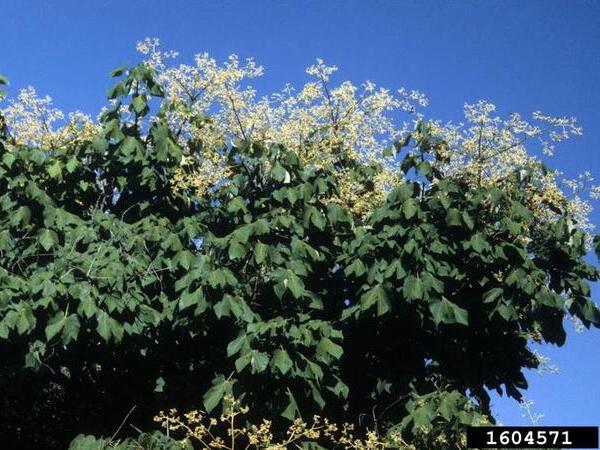
Chinese Parasoltree (Firmiana simplex): Native to eastern Asia and introduced in the late 1700s as an ornamental tree. It has an unusual appearance for a deciduous tree, having green stems and bark and extremely large, three to five-lobed, bright green leaves. Each leaf is up to 12 inches across providing a large amount of shade. It has a dense, upright, oval canopy and reaches 35 to 50 feet in height, spreading 15 to 20 feet wide.
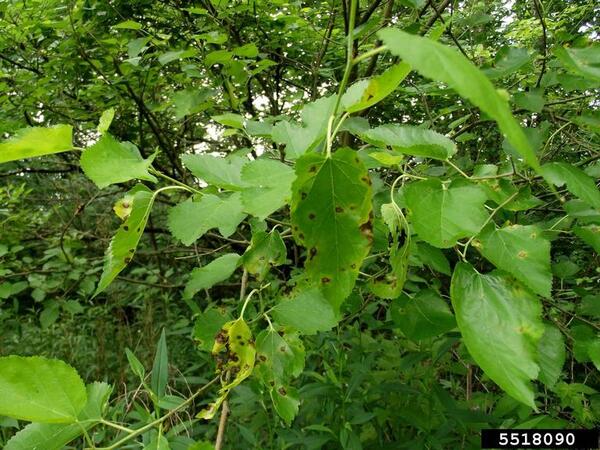
Paper Mulberry (Broussonetia papyrifera): Native to Asia. Paper mulberry was introduced for use as a fast-growing, ornamental shade tree. In its native lands, is used in paper making. In Hawaii and other parts of the South Pacific, its bark is used to make cloth. In the U.S. it is found from Illinois to Massachusetts, south to Florida and west to Texas. Paper mulberry is an invader of open habitats such as forest and field edges.
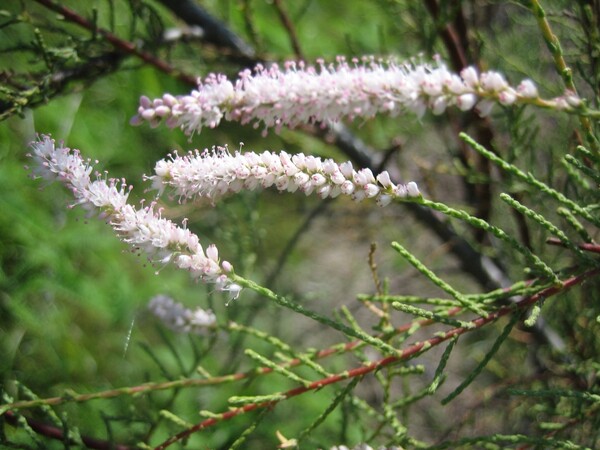
Saltcedar (Tamarix spp.): Saltcedar is characterized by slender branches and gray-green leaves. The bark of young branches is smooth and reddish-brown. As the plants age, the bark becomes brownish purple, ridged, and grooved. Leaves are scale-like, about 1/16 inch long, and overlap each other along the stem. They are often coated with salt secretions. From March to Sept., many pink to white flowers appear in dense groups on two-inch-long spikes at branch tips.

Chinese Pistache (Pistacia chinensis): Growing to 40 feet, this deciduous species has a broad, spreading canopy with attractive, glossy green leaves consisting of up to 10 pairs of leaflets that turn vibrant red and orange in the fall. Tolerates a wide range of conditions, including drought, heat, and alkaline soils. It can spread quickly and displace native plants. Female tree will produce large quantities of red berries, which are readily eaten and dispersed by birds.
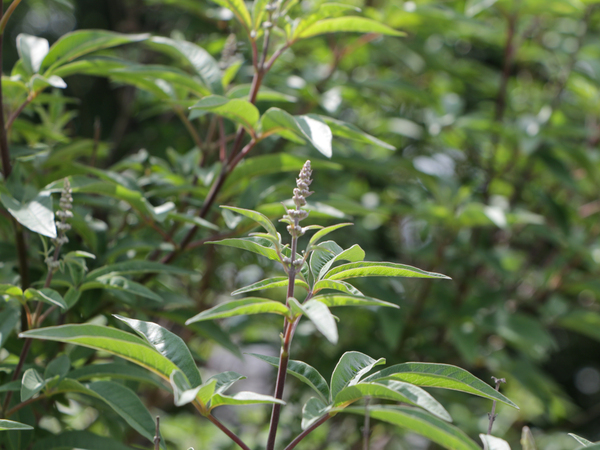
Vitex (Vitex agnus-castus): Also known as chaste tree. A spreading plant that grows 10 to 20 feet tall and nearly as wide. Branched clusters of purple or blue flowers are produced on new wood in late spring and early summer in a great flush. Often found in limestone outcrops and dry creek beds, seeds spread by birds can establish rapidly and outcompete native plants.
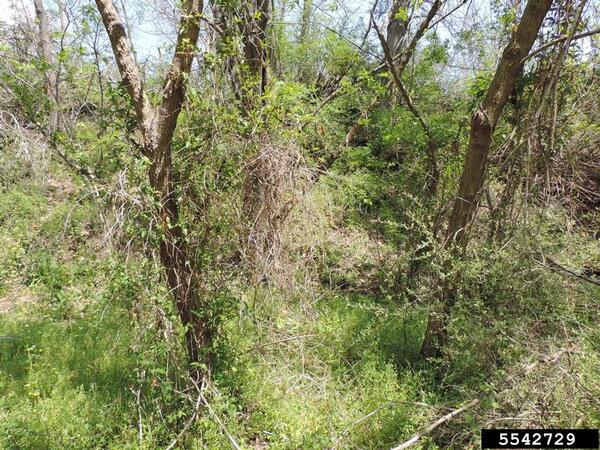
Japanese Honeysuckle (Lonicera japonica): Introduced from Japan in the early 1800s for erosion control and as an ornamental. Semi evergreen, woody vine with simple, opposite leaves. It produces white to yellow, and sometimes pink, fragrant, tubular flowers that turn into black berries from April through Sept. Spreads aggressively and forms dense mats that inhibit native vegetation.
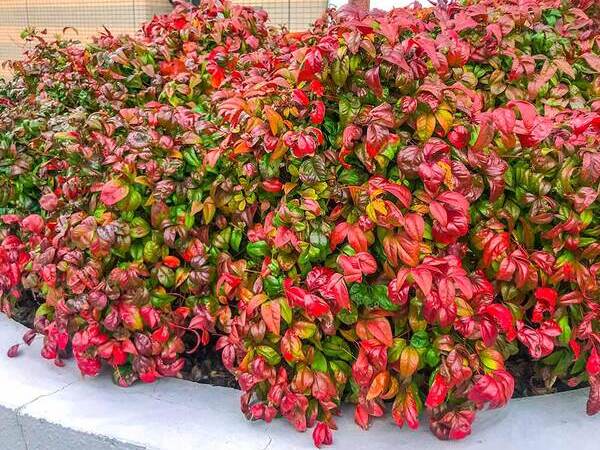
Nandina (Nandina domestica): Introduced from Asia and India in the early 1800s and widely planted as an ornamental. Evergreen, rigid shrub that grows up to eight feet in height, with multiple bushy stems that resemble bamboo. Glossy, compound green or reddish leaves, white to pinkish flowers in terminal clusters and bright red berries in fall and winter.
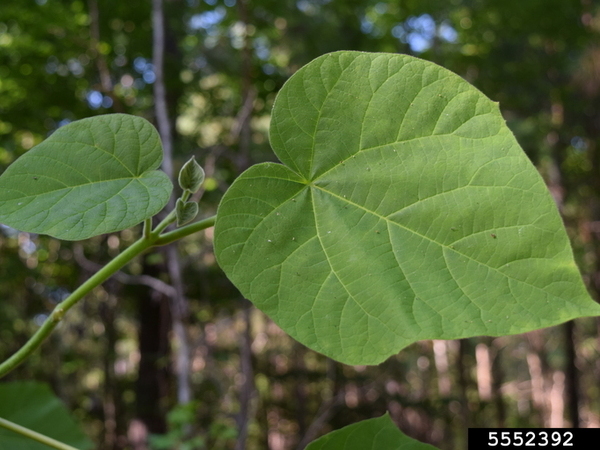
Princess Tree (Paulownia tomentosa): Deciduous tree that grows up to 50 feet in height and two feet in diameter. Large heart-shaped leaves are fuzzy on both sides. Clusters of showy purple flowers in early spring before leaves. Grows rapidly and spreads quickly through abundant seed production and root suckers in disturbed natural areas including forests, streambanks, and steep rocky slopes.
